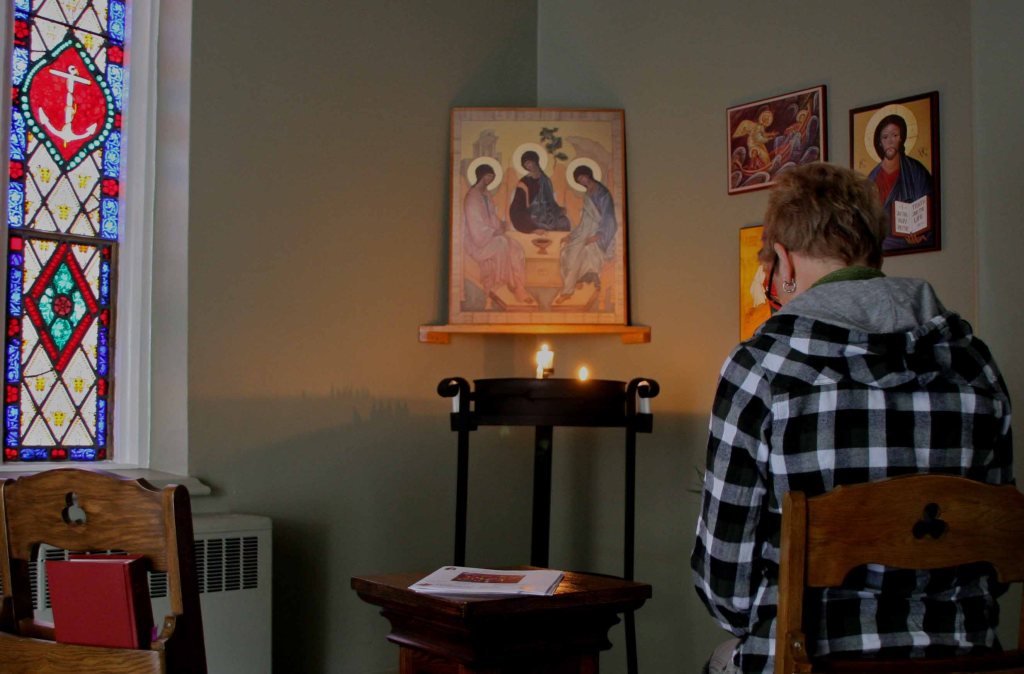I am wondering if the experiences of choir directors out there confirm an observation of mine about the power of a drone - that is a continuously sung note alongside the melody - to help engage people with sacred music in the right way? I have seen the drone used in Gregorian chant and Byzantine chant to powerful effect. I suggest that this is something that could be used more, especially in modern churches which are not designed with an acoustic that produces a harmonic resonance naturally. In my opinion, chant requires that faint suggestion of harmony that such a resonance lends to it, as one might hear in a gothic abbey for example, in order to have full effect as sacred music (I will explain my reasons for saying this later).
Here are my thoughts as to why this might be. One of the attributes of beauty, famously listed by St Thomas, is due proportion. When something has due proportion, each part of an object must be in right relation to each other in a way that is appropriate to the purpose of the whole. What constitutes due proportion in any particular situation is to a degree a matter of judgment, but there are geometric and arithmetical guidelines that can inform that judgment.
Beauty it seems is ordered by the number three. Going all the way back to pre-Christian classical culture, it was noticed that in the human response to things in combination - that is, in relation to each other - a minimum of three things were needed to constitute some sense of completeness in the arrangement. If there are just two in combination there can still be beautiful combinations, but there is inherent within it a sense that it is incomplete.
This is most easily explained in the natural response of most people to the combinations of notes in music. When two notes are placed in a relationship to each other, it is called an interval, and when it is pleasing it is described as 'consonant' meaning literally, 'sounding together'. However, it was also noticed that when people hear a harmonious interval, it still seems to lack something. If you ask the music theorist why this is, they will tell you its because an interval could be the basis of either a major or a minor chord, and you don't know which until the third note is supplied. When that third not is supplied, and a full chord is created and the sense of deficiency is removed. This suggests that we have hardwired into us, that pattern of the harmony of music.
There is sufficient consensus on this differing human response to an interval and chord that it has never really been questioned. Even the most secular music schools of today would concur and use this as the basis for the theory of musical harmony, even if they then go on to reject consonance as a good and promote dissonance (meaning literally 'not agreeing in sound').
Because musical harmony could be described numerically, by considering, for example, the magnitudes of pipes or strings that produced the separate notes, the assumption was made that the same numerical patterns present in musical intervals and chords could be used in any aspect of time and space in order to make the culture beautiful. It is most obviously applied in architecture, in which the dimensions of buildings can correspond to them.
So in this building below we see traditional harmony in architecture based on the principle of three:
This building from the 19th century in Annapolis, Maryland has three stories of different sizes. The harmony is made apparent by making the windows different sizes.
It is possible to represent an interval in architecture as well, as in this two-storey colonial house below.
Not everyone can afford to have a three-storey house after all!
However, even if you can only have two storeys, there are ways to incorporate the beauty of three into the building.
Here, in this nicely proportioned modern townhouse, the basement has a smaller window but it is deliberately designed so as to give the impression that it extends below ground and is longer, but largely hidden. So, in our imaginations, we create that third element to fit the pattern and imagine the basement extending well below ground. We naturally want to see that rhythmical progression where the first relates to the second as the second relates to the third.
Generally, you see the magnitude of storeys reducing as you go up, this is perhaps analogous to the major triad. But you can have a minor triad arrangement as well in which the larger spacing is higher. In the picture below, look at the spacing of the horizontal lines that divide the spaces between the windows and not just the window size.
Harmonious proportion was defined in Boethius's De Institione Arithmetica as 'a consonant relationship of two or more ratios'. A ratio is a relationship between two magnitudes. Put another way, Boethius is telling us that proportion is an appealing relationship between two relationships.
This is why we need a minimum of three objects to descript proportion - we can't have two or more ratios unless we have that many at least. Although the language which describes these proportions (he lists 10 in all) is musical they are not all derived from musical harmony. They come from the observation of the natural relationships that contribute to the beauty of the cosmos, the human form, and the observation of symmetries that exist within the relationships between numbers and shapes in the abstract world of arithmetic and in geometry. (Note, the Golden Section is not included traditionally despite what many people today assume!)
The assumption was that instrumental music was simply one manifestation of the principle of beauty that runs through all of Creation. For the Christian, these are all facets of the divine beauty that is embodied in the person of Christ.
Now, back to sacred music. The beauty of chant comes from the patterns of intervals that exist between notes from the melody which, if not heard simultaneously, are close enough in time that we connect one to the other - just as we can hear a chord in an arpeggio as well as directly in harmony.
Chant is most beautiful, I always feel when sung in a church with an acoustic that provides resonances and echoes and which faintly harmonize with it. This allows the notes to merge and overlap more and so enhance our sense of the two together. Also, we grasp on to that faint, suggested harmony but it always leaves us wanting more because it is not fully expressed. It creates a longing that, when done well, takes our imaginations to the non-material realm and so elevates our thinking, in some way to a mode of thought that inclines us to grasp the spiritual truths being communication by word and music in combination. When I hear this effect I always imagine, also, that I am detecting the ghostly appearance of angels singing with us in the heavenly liturgy. (This dynamic of drawing us in through beauty and then directing our imagination to the contemplation of heavenly things is built into the stylization of sacred art as well incidentally.)
Sadly, many churches today do not have this acoustic and, especially with carpeting, it is hard work to sing chant and this dynamic which draws us in and leaves us wanting more cannot operate in the same way. One way of overcoming this, perhaps, is to add a drone. It brings sacred chant to life, in my opinion. There may be reasons for this that I don't understand, but I present the following as a possible explanation.
Adding the drone ensures that there are always two notes in relation. As the melody moves up and down, the relationship between drone and melody constantly changes as the intervals vary. In our imaginations, therefore, we grasp for a steadily changing variety of suggested major and minor chords. For this reason, chant in which the pitch of the drone moves relatively little is perceived as musically more complex than music in which the lower note moves much more, in, for example, parallel fifths. I should say that the drone is striking when the acoustic is good too, shag-pile carpeting is not a necessary condition for the effect to be apparent!
We can hear the drone in this example of Old Roman chant:
https://www.youtube.com/watch?v=Kdka1WN1c8c
Byzantine chant especially comes to life with the 'ison'. Here is Resurrection Troparion, Mode 6 from the Melkite Greek Catholic liturgy:
https://youtu.be/VNKIcZP6ook
It occurs to me also, that this allows for an engagement with congregations that might not otherwise be possible. There is no reason why people can't sing the drone while the skilled cantor sings the melody. This becomes a form of music, I suggest that seems less precious and distant to the uninitiated.
Where I live we have a regular pot-luck with Vespers as a social event. We sing simple psalm tones and I deliberately choose tones that finish on the final of the mode. This final becomes the drone note for the chant. The small group, which is not specialist singers, is divided into two groups and we sing antiphonally, alternating between melody and harmonizing drone. People catch on quickly and enjoy doing it and the effect is striking, even in our living room! Furthermore, I sing collects to a slightly more complex melody and begin by asking everybody to hum the drone note before I do so. These are not expert singers, in fact, a number are people who never sing hymns at church - they find this easier to sing than the usual fare at Sunday Mass
It is more earthy and accessible while retaining the spiritual qualities appropriate for sacred music and so will encourage all, men and women to sing, I suggest.
https://youtu.be/xmkhk9Z8Lu4







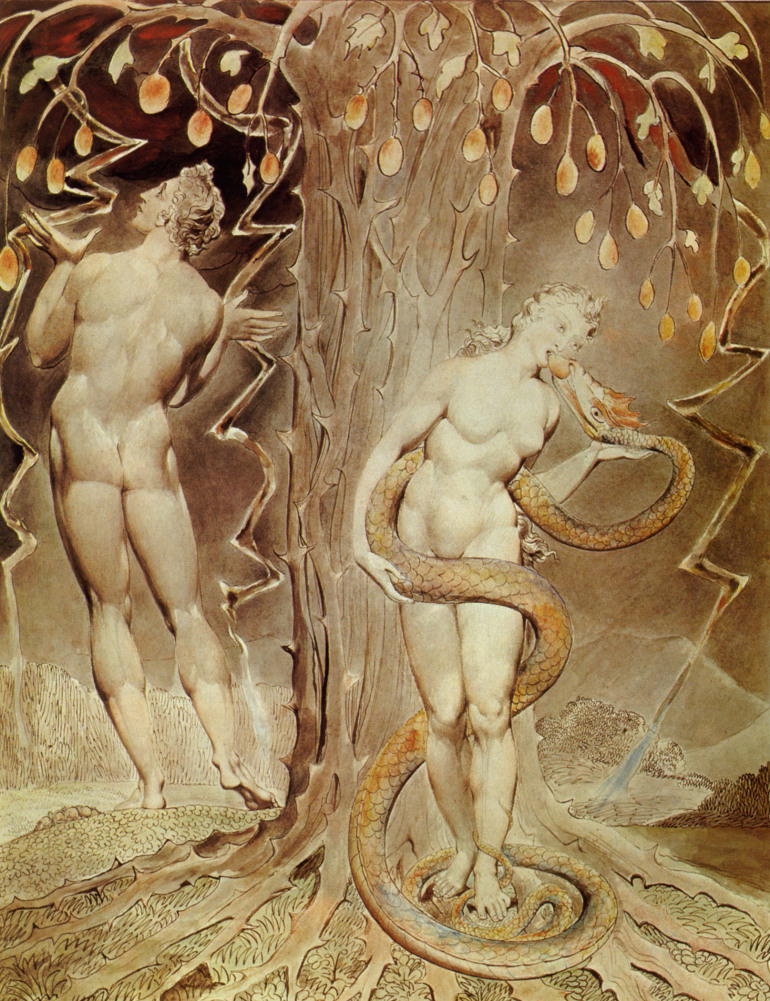


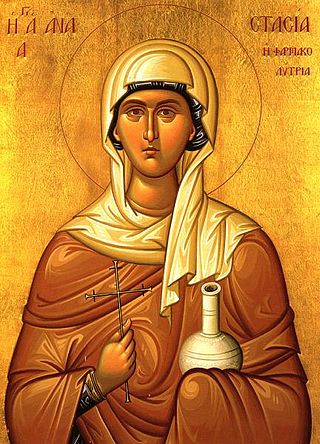
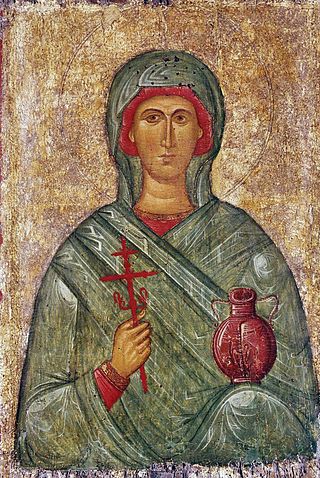

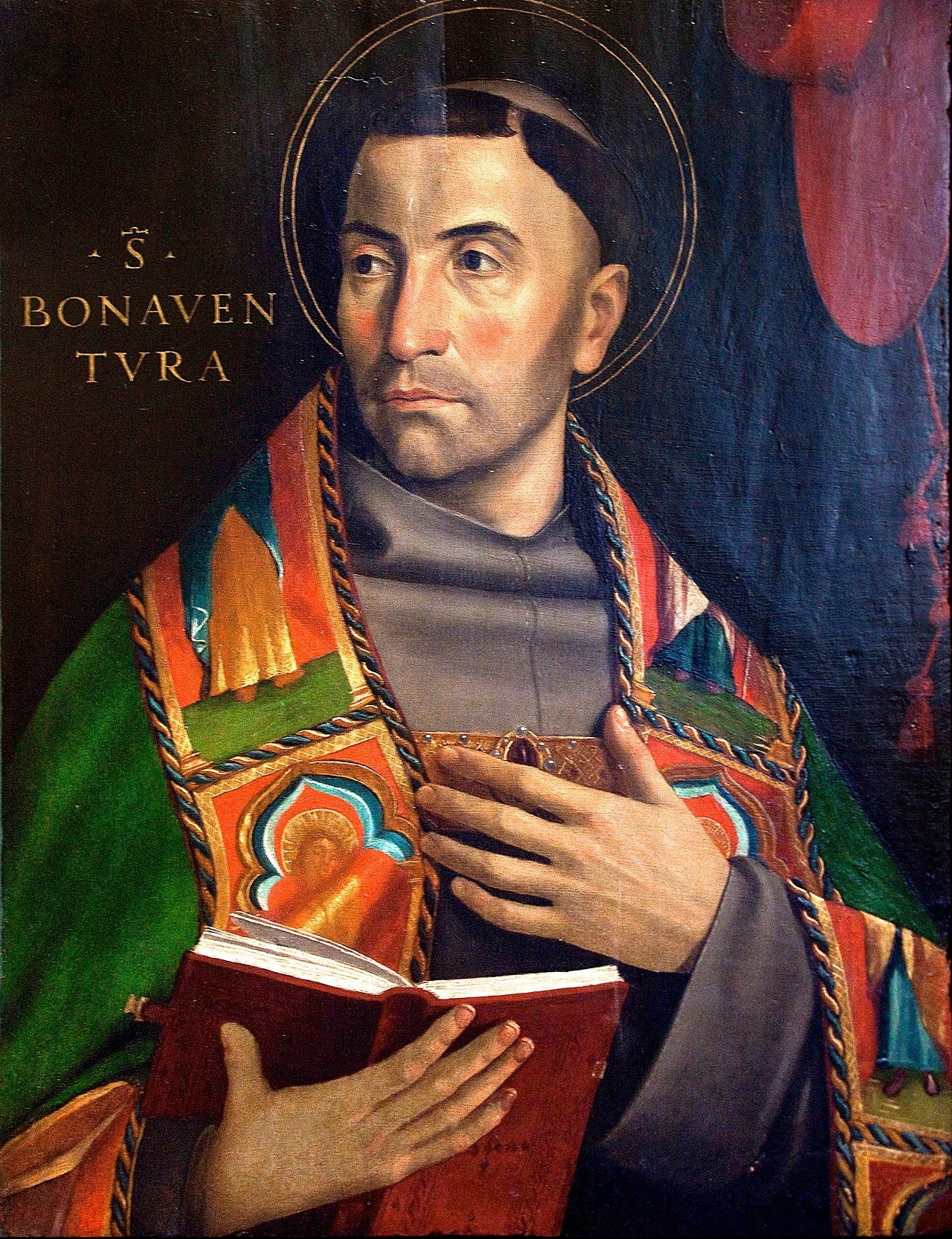











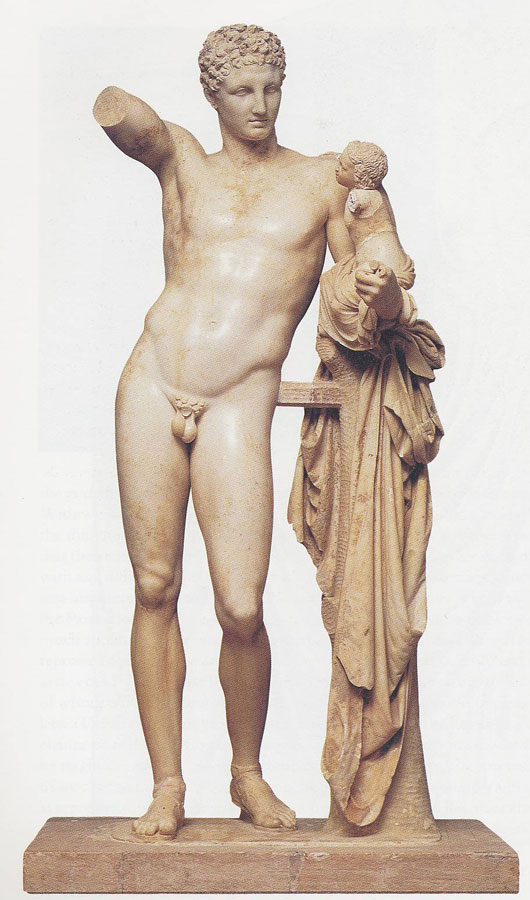
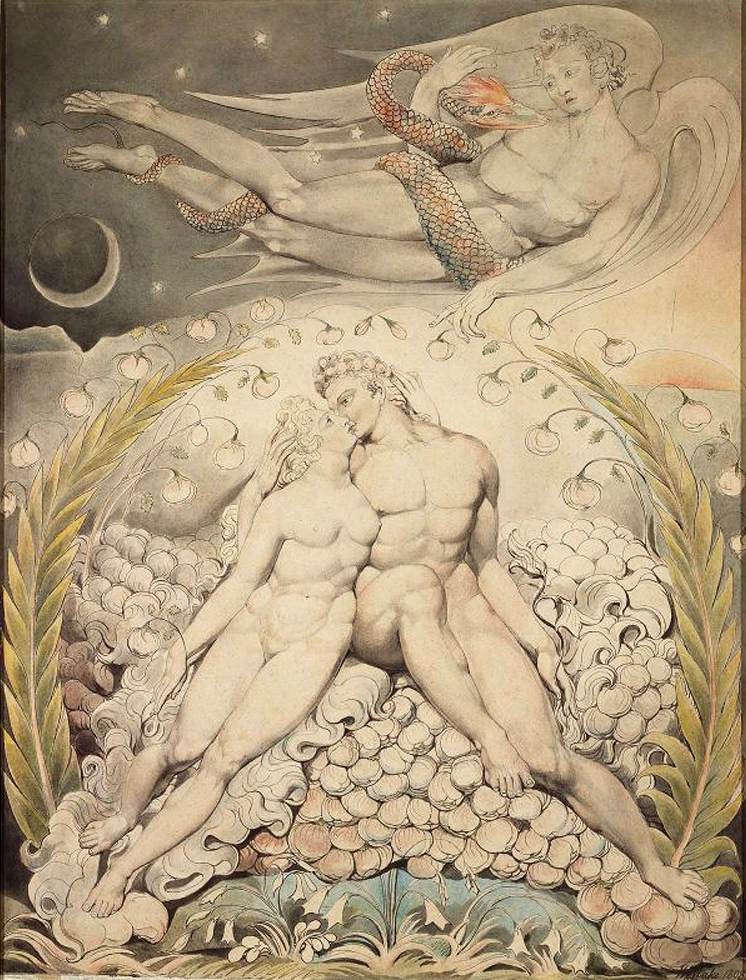

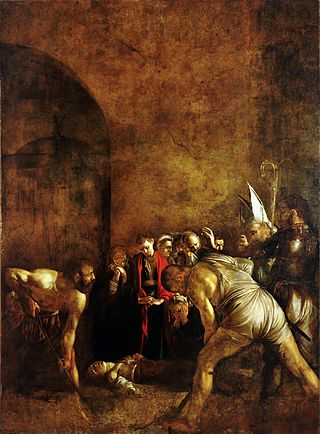
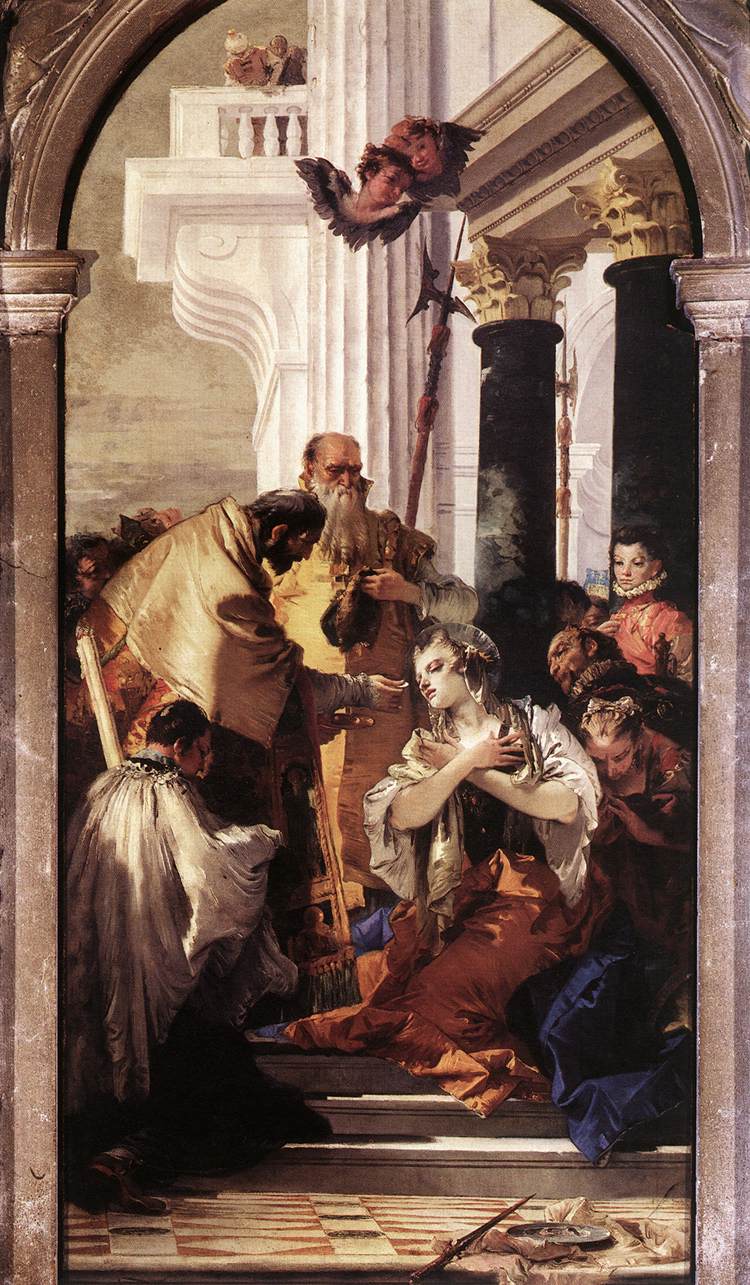 Other attributes we will see are a palm branch - which is appropriate to all martyrs - as seen in this famous Renaissance period painting by Francesco de la Cossa
Other attributes we will see are a palm branch - which is appropriate to all martyrs - as seen in this famous Renaissance period painting by Francesco de la Cossa  And, people struggling to move her. The consul Paschasius ordered that she be removed to a brothel and abused until she died. However, teams of men tried but failed to move her. We see this in the painting below in this 15th-century depiction. Teams of oxen are being used.
And, people struggling to move her. The consul Paschasius ordered that she be removed to a brothel and abused until she died. However, teams of men tried but failed to move her. We see this in the painting below in this 15th-century depiction. Teams of oxen are being used. 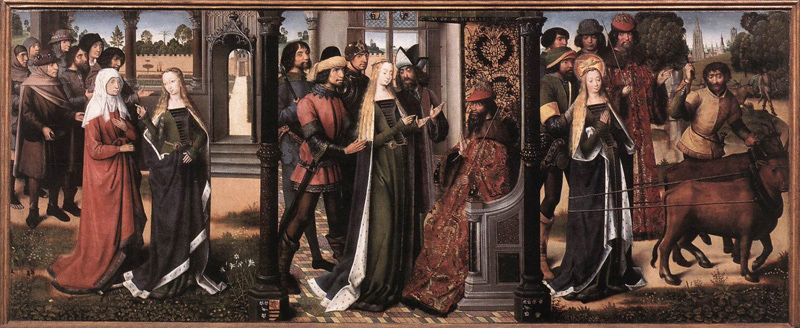 A tradition iconographic image has the saint holding a cross as a sign of martyrdom as in the beautiful fresco:
A tradition iconographic image has the saint holding a cross as a sign of martyrdom as in the beautiful fresco: 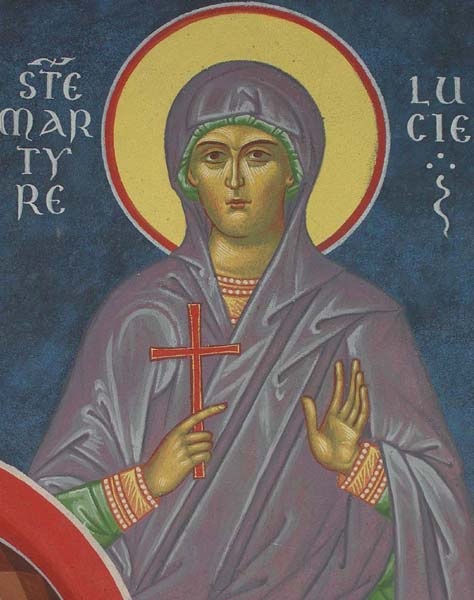 I finish with Caravaggio and his burial of St Lucy. This is a late painting done when he was in exile, so to speak, from Rome and living in Sicily, the home of St Lucy. It is an altarpiece and in my opinion, one of the most brilliant paintings he has done. I do not know if the stylistic development is by accident or design, but regardless I like the result. Notice how much more this reflects the developing baroque style than his early work. It is shrouded in more mystery, with disappearing edges, far more numinous monochrome rendering and less colouration than he might have painted in his youth. The composition is brilliant, with the arcs of the arcs of the limbs of the two figures in the foreground creating a mandorla, which frames the figure of St Lucy.
I finish with Caravaggio and his burial of St Lucy. This is a late painting done when he was in exile, so to speak, from Rome and living in Sicily, the home of St Lucy. It is an altarpiece and in my opinion, one of the most brilliant paintings he has done. I do not know if the stylistic development is by accident or design, but regardless I like the result. Notice how much more this reflects the developing baroque style than his early work. It is shrouded in more mystery, with disappearing edges, far more numinous monochrome rendering and less colouration than he might have painted in his youth. The composition is brilliant, with the arcs of the arcs of the limbs of the two figures in the foreground creating a mandorla, which frames the figure of St Lucy. 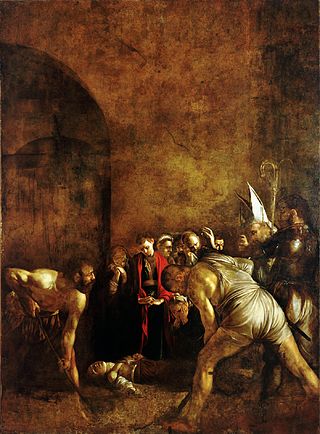 This is one of a series of articles written to highlight the
This is one of a series of articles written to highlight the 









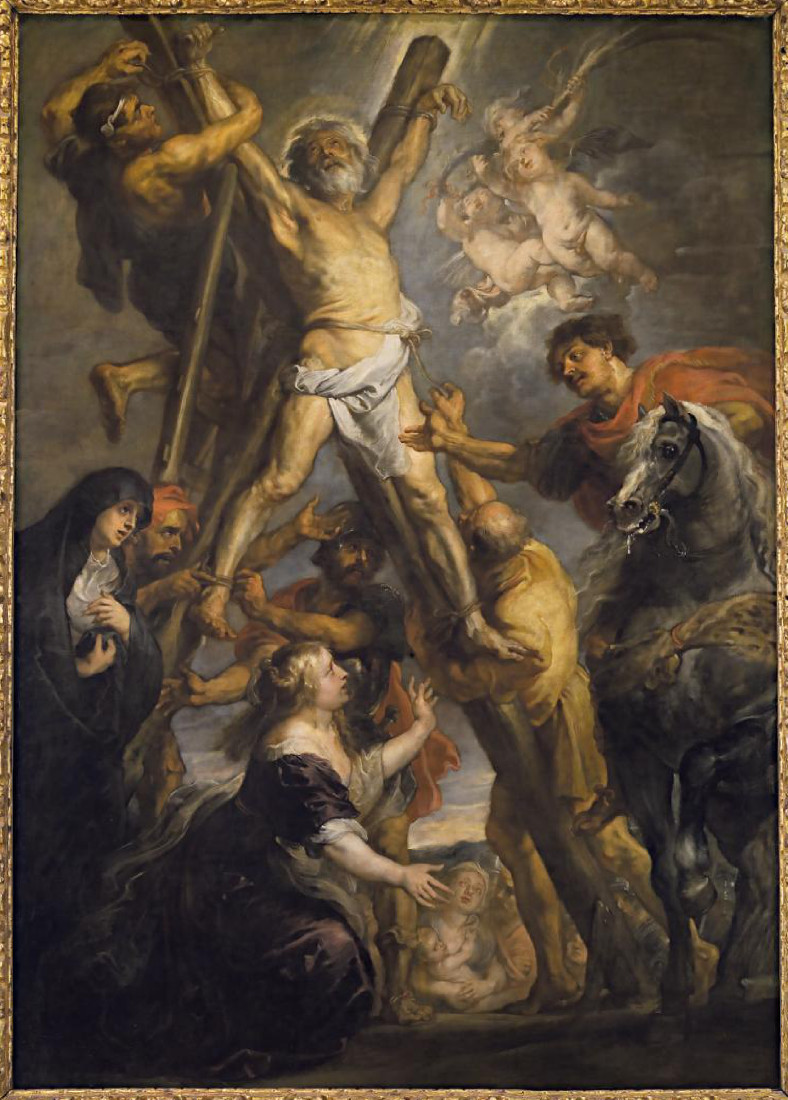
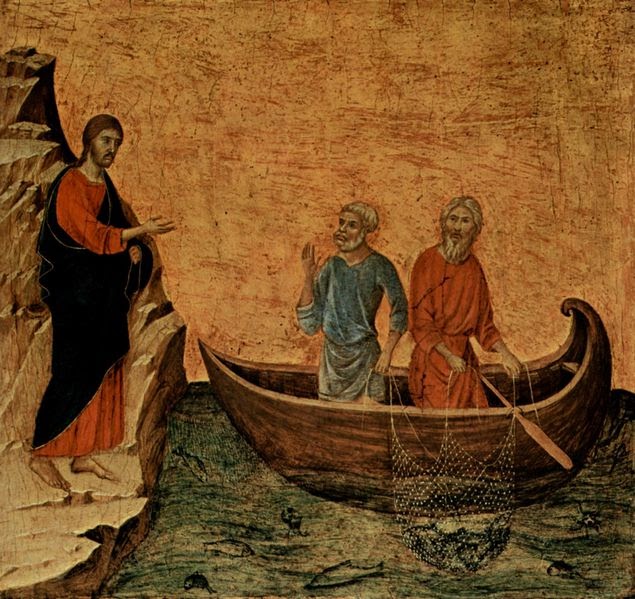
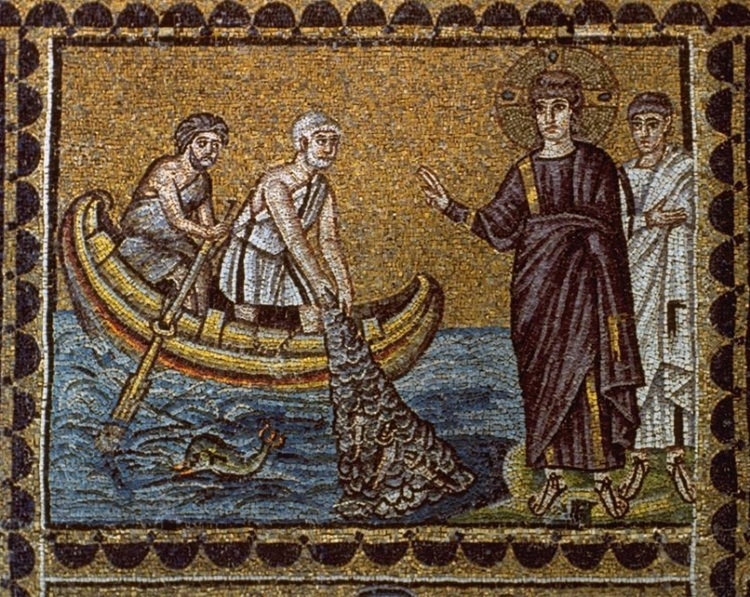









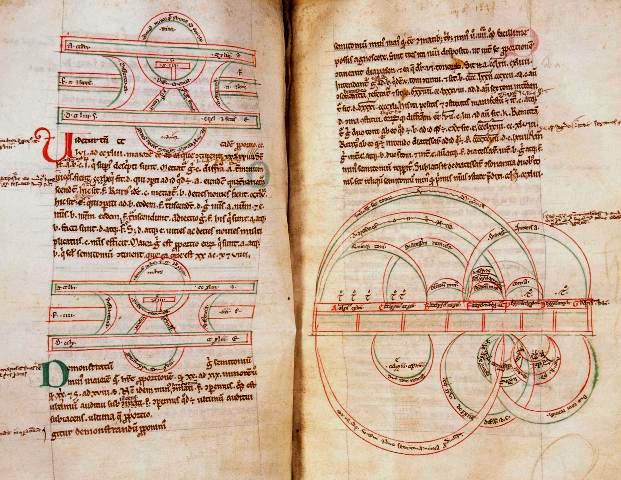

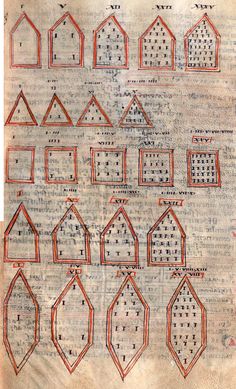

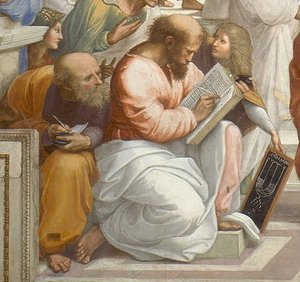
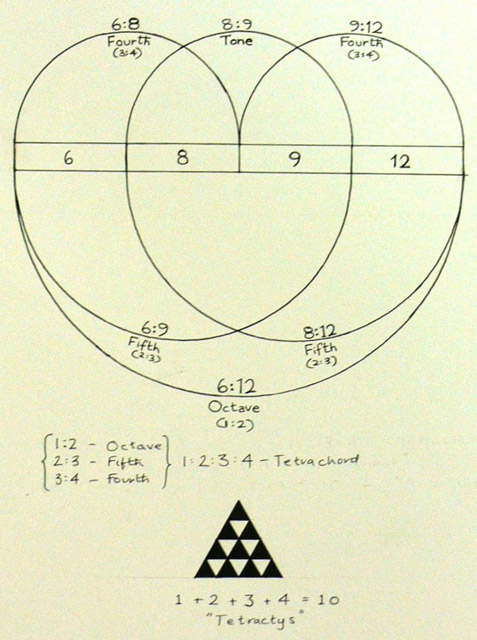




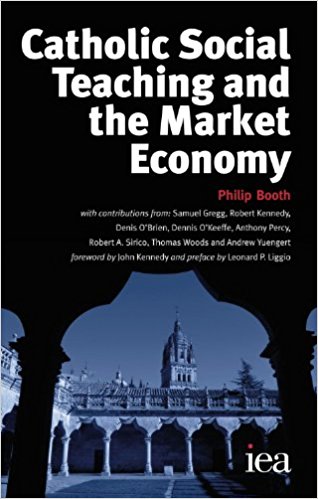 Anyone who is interested in an overview of Catholic social teaching and the economic policies that are in harmony with it should read this book. It is published by the Institute of Economic Affairs and is available from Amazon or as a free download from the IEA website
Anyone who is interested in an overview of Catholic social teaching and the economic policies that are in harmony with it should read this book. It is published by the Institute of Economic Affairs and is available from Amazon or as a free download from the IEA website 
